Are you wondering what type of beehive you should choose to get started on your journey? Well, we’ve laid out the most common types of beehives plus their pros and cons so you can ultimately choose the beehive style that works best for you.
Before we jump straight in and familiarize ourselves with the different beehives available, let’s first understand the magnitude of making such an important decision. Allow me to provide you with more context…
Understanding the Role Your Beehive Will Play
Have you ever been house shopping? If you have, then you know how vital it is that you get that perfect fit.
The only thing that makes it a little easier is if you’re buying in a buyer’s market.
All that means is that you, the buyer, have more power than the seller since you have so many more options.
You can afford to be picky, and the seller has to do everything in their power to make you want to live in their house.
Now in the bee world, this is the reality.
Bees don’t need beekeepers as much as we think they do.
They are pretty good at finding new homes on their own, in trees, abandoned structures, not-so-abandoned ceilings, and so on.
The only reason beekeepers love providing them with prime real estate is to make it easier to get to their honey pantry.
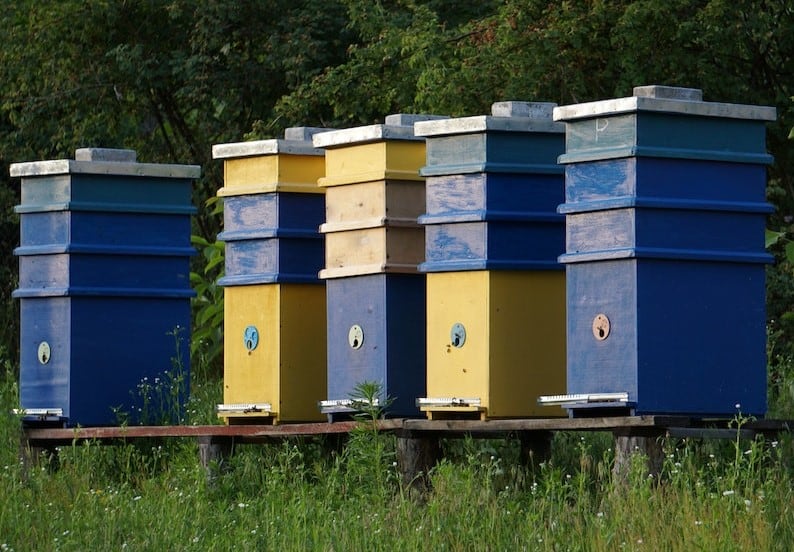
The beehive is where bee comfort and human convenience meet.
This is why you will find that the various types of hives try to mimic a natural situation. That’s why most beehives are made of wood even today.
Once upon a time, when man had a hankering for honey, he would kill the colony to get at it.
That’s a pretty inefficient system, but that’s all we knew. Imagine if you had to kill a cow to get to the milk.
The fact that the bees lived through that age is a testament to the claim that they don’t need us as much as we assume they do.
So man, realizing the fatal flaw in this system, decided to find a way to keep the honey bees productive even as we raided the pantry.
Behold, here comes the modern beehive.
Now, let’s find out what beehive options you can provide for these enterprising tenants.
4 Most Common Types of Beehives and Their Pros and Cons
If you’re just getting started with beekeeping, then choosing your type of hive is one of the first tasks you must complete.
Below you will find the four beehive styles that you can choose from and their respective pros and cons.
1. The Langstroth Hive
Welcome to the Toyota of bee hives. When most people talk about hives, this is what they have in mind.
They look like a narrow chest of drawers, named after their inventor, Reverend L.L. Langstroth.
What makes this type of hive so effective and allows its core principles to remain in use over 100 years later is the application of bee space.
Think of the Langstroth hive as a grocery store. The honey bees, in this case, are the proprietors.
If the aisles are too wide, then you lose out on shelf space and limit how much product is available to the customer. If it’s too narrow, your customers will hear will complain.
So, you’ll want to seal off those spaces and find an alternative use for them, such as advertising.
The bees work in similar ways. If the space in their beehive is too small, they seal it off with propolis. If the space is too wide, they build more honey storage space.
The sweet spot is between 1/4” and 3/8”. Once the Reverend figured that out, he had a type of hive that did not require the destruction of comb and the basic structure of the hive, which allowed for efficient inspections.
The Langstroth is a vertical hive, and expansion occurs either upward or downward. There are many variations of this type of hive that involve the stacking of boxes that form the parts of the hive.
The lower chambers of this hive style tend to be larger than the upper chambers. That’s because the lower chambers are the nursery of the colony, which we call the brood.
Beekeepers prefer to have the larger ones as the brood chambers since they provide the colony with enough space to populate the colony as well as store enough honey to get them through the winter.
The Number of Brood Boxes Needed for the Langstroth Hive
Many newbies wonder how many of these brood boxes they need for the Langstroth Hive.
Well, that depends on how strong your colony is and your preference.
Most beekeepers have at least two brood boxes.
The best way to work out what configuration works in your area is to visit a few local beekeepers and find out what they use.
You won’t need to put all the boxes you purchase together all at once.
The boxes are added gradually as the workers fill up the existing frames with honeycomb.
The upper chamber is smaller in height and is referred to as the honey supers. That’s your area.
The honey bees will only fill this up once they have filled up the lower chambers, which is why this type of beehive is so popular.
It’s a great way to ensure you take just enough without putting the survival of your honey makers at risk.
Hence, commercial beekeepers more commonly use the Langstroth Hive.
Looking for a Langstroth Hive? Check this one out from Amazon!
Pros of Choosing The Langstroth Hive
- Readily available and reasonably priced.
- Interchangeable parts mean you can get supplies from multiple manufacturers.
- The beehive is easy to maintain. A coat of paint every few years keeps it going.
- Available as an assembled product. If you’re not a craftsman and not big on puzzles, you can have this type of hive already assembled, which makes setting up very simple.
- Ideal for honey production.
Cons of Choosing The Langstroth Hive
- Requires a bit of heavy lifting. This hive grows vertically, so as the colony becomes established, inspecting the hive will require you to lift the upper boxes off in order to check on the brood area and see how your queen is getting on. When you start harvesting, that honey super can weigh anywhere between 20-50 pounds, depending on the size you have chosen. Even with help, that’s not an easy task, so you will need to prepare for that.
- It’s not the “natural” way. Well, this point is subject to heavy debate. In truth, anything that isn’t the trunk of a tree isn’t particularly natural. Many argue that the use of a foundation takes away the natural freedom of the bee to build the comb with cells that suit the colony. My solution is you could do away with the foundation, and in many parts of the world, they only put wax strips as a placeholder, directing the bees to build comb from that point downward.
Overall, when new to beekeeping, the Langstroth hive is the most recommended hive type for the beginner.
2. The Long/Horizontal Hive
If the common Langstroth is the mansion version of the hive, then the long hive is the bungalow.
It was developed from the Langstroth hive design, but it is longer. This is why there’s no heavy lifting. Everything is on one level.
Bees, being very organized, will maintain the brood primarily near the entrance, and the honey will be stored further away.
In some cases, this hive option may come with an observation window which makes it easier to check in on them, especially during the cold months, without having to open the hive each time.
Pros of Choosing The Long/Horizontal Hive
- No heavy lifting. Great if you have a bad back, joint pain, or mobility challenge. Also good for children who are just starting out.
- If you get the Valkyrie hive, the top is hinged and opens like a treasure chest. This gives you room to place your tools or even frames as you inspect the hive.
- Frames from Langstroth hives can be used interchangeably.
- Modified versions allow for the addition of supers.
Cons of Choosing The Long/Horizontal Hive
- Horizontal hives are more expensive than the typical Langstroth hives because they are not as easy to find.
- Other than the frames, other hive fixtures may not fit with this type of hive.
3. The Warré Hive
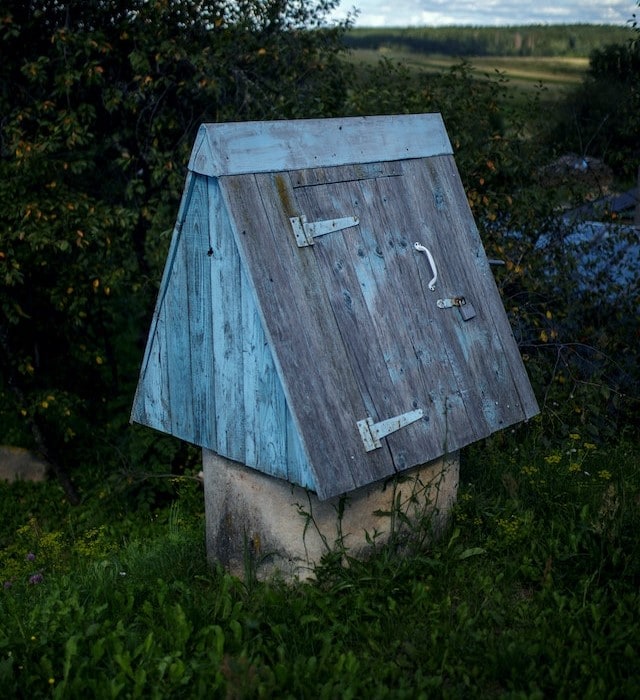
The Warré hive was built to mimic a hollow tree.
A French Abbot called Emile Warré came up with this design as a solution to keeping bees with minimal interference to their day-to-day activities.
It’s the hive equivalent of “I can’t believe it’s not butter,” in this case, “I can’t believe it’s not a tree.”
The boxes are square, which is as close to a cylindrical shape as convenient manufacturing will allow.
Originally, the Warre hive only contained top bars, which gave the bees the freedom to build the comb they wanted.
The bees also get to work in the manner they choose, which is building downward.
Additional boxes are added below the existing brood box, unlike the Langstroth hive, where additional boxes are added above.
They have the added feature of a quilt box, which is great for ventilation and regulating both temperature and humidity.
Pros of Choosing The Warre Hive
- Very low maintenance. You only open the hive to remove honey or to add boxes which may be once or twice a year.
- It’s the naturalist’s dream hive. The bees build comb from scratch, build downward like nature intended, and have the opportunity to live in a clean comb. Every time you harvest, you take away the comb that previously contained brood. That way, the queen is continuously laying eggs in fresh wax, and contaminants that may have made their way into the wax are removed annually.
- Because of the simple structure, they are quite affordable. If you’re handy with a saw, download the plans and make them yourself.
- During the nectar season, you can add a super above the existing boxes and get some bonus honey. However, you need to have understood the nectar flows in your region first to be sure that the bees can fill it.
- No need for a queen excluder. As they build downward, she lays her eggs downward and leaves the top boxes for honey storage.
Cons of Choosing The Warre Hive
- Although you only need to lift twice a year, it will make for some very heavy lifting. Adding boxes below in spring means having to lift the other boxes, usually two or three. This is further complicated because the bees are likely to have built comb from one top bar to the other, making it impossible to separate the boxes without doing some very serious damage to the comb.
- Because of the “freedom of construction,” inspecting the Warre hive if you suspect a problem is extremely cumbersome and can cause a lot of damage to the fragile frameless comb.
The Warre hive is a fantastic beehive option for keeping bees naturally as long as you understand that all your observations will be limited to the entrance.
4. Top Bar Hive
Also known as the Kenyan Top Bar Hive, the Top Bar hive structure is like a hybrid of the Warre hives and the horizontal Langstroth hive.
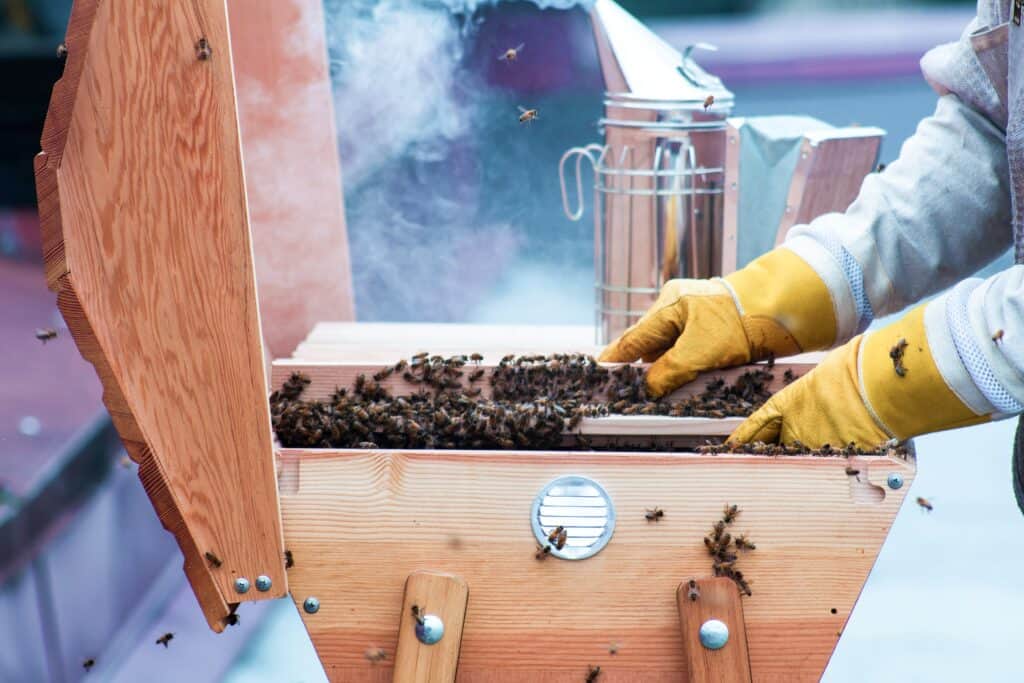
Similar to the Warre hive, it mimics nature, in this case, the shape of a comb. If you look up pictures of feral colonies, you’ll notice a similarity in the shape of the comb.
They are all flat at the top, where they are attached to a roof or ceiling, and then get narrower as they move down.
The Top Bar hive has a trapezoid shape. The reason for this is that since it follows the shape of the comb, the bees are unlikely to attach the comb to the wall of the hive, making the extraction much easier.
Since this type of hive is horizontal, it shares many benefits with the horizontal/Long hive.
As the name states, top bar hives do not have frames. They just have a top bar allowing the bees to construct combs naturally.
Pros of Choosing the Top Bar Hive
- No heavy lifting, and very easy to harvest honey. You just chop off the comb under the bar and replace the bar.
- Another one for the naturalist’s team. The top bar hive allows bees to build their comb according to the needs of the colony.
- Allows you to carry out inspections. Because of the shape of the hive, the bees will usually draw comb away from the walls. Sometimes, they may build comb bridges between bars, but that can be mitigated if caught early.
- Allows for the addition of supers from Langstroth hives.
Cons of Choosing the Top Bar Hive
- Knowledge transfer is a challenge. The population of beekeepers that use top bar hives is quite small, and running into them is quite rare, so finding someone to walk you through the experience will be difficult.
- They are not readily available. On the plus side, they are relatively cheap to build. As a result, many parts aren’t standardized, so you may find parts for sale that are incompatible with the structure you already have.
How to Choose the Right Type of Beehive for You

There are other hives outside the above four that I have mentioned, but most will be variations of the Langstroth hive.
As you can see, no hive is perfect. What you need to do is prioritize your needs.
If you’re in no position to lift, then that eliminates two possibilities. Then, your preference comes into play.
Do you dare go without foundation? Then the Top Bar will work for you. If not, then try the horizontal hive.
No matter what type of beehive you choose, if you take care of your bees and keep them healthy, they will be happy with your choice.
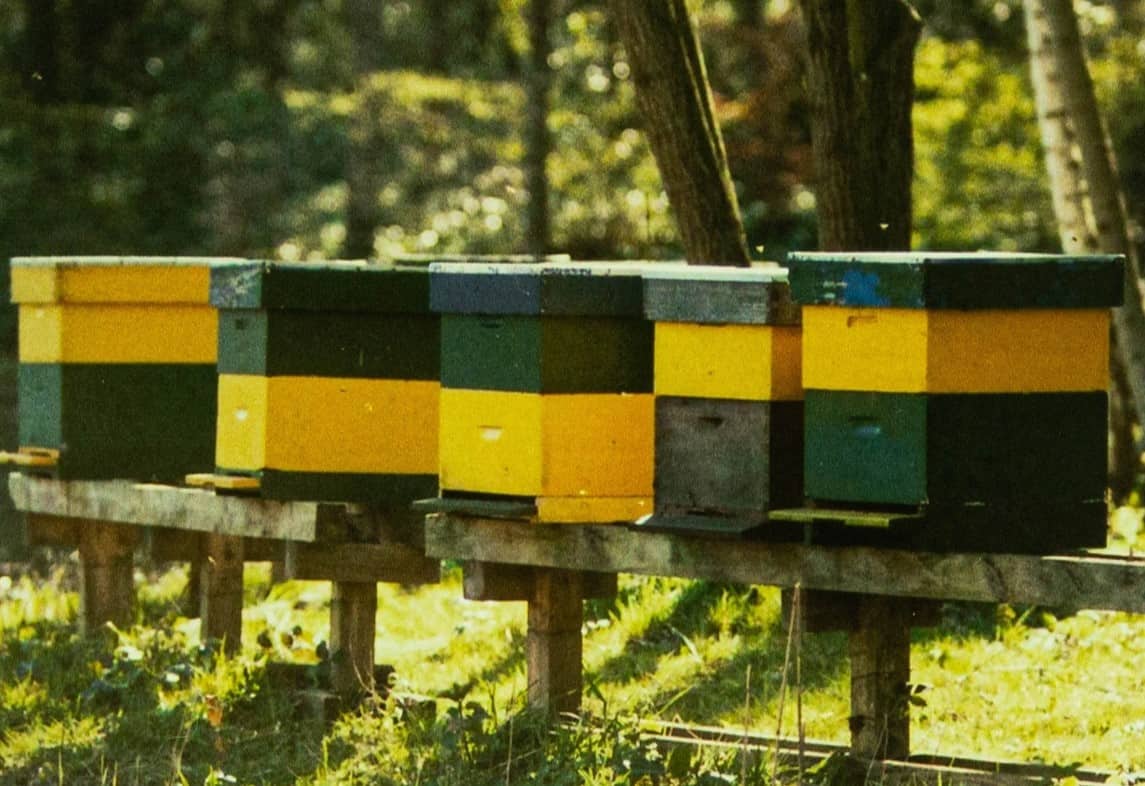

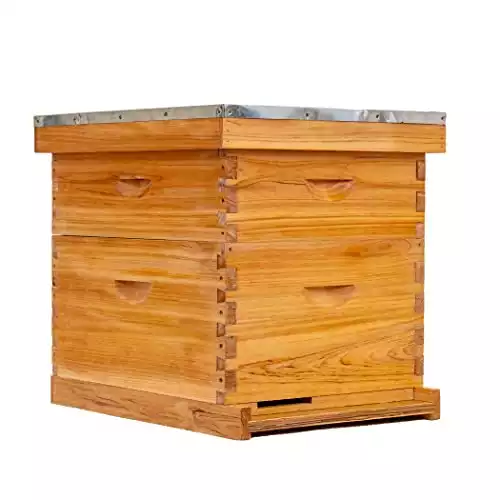


Very enlightening for would be Bee keepers.
You left out any mention of layens insulated hives. Many advantages in cold climates as well as hot.
Plus, all the benefits of a top bar hive, with the addition of extractability!
Good information.
Very enlightening information
Glad you didnt include the Flowhives. They dont rate ammongst serious beekeepers
Flow Hives are Langstroth hives.
Very informative good for starters
Any thoughts on the Slovenian bee hives ?
I want to know a bit price for hives
I can’t find any swarms anywhere…where do u normally look for them…
I have to rely on a swarm because buying bees is Incredible expensive…can’t believe how much money people want for bee especially queens…I thought beekeeping was something beekeepers did for the survival of bees…I was wrong…its purely for money…thank you for anyone’s help…I do appreciate it..
Thank you for this good information. Spent so much time researching bees. Wish I had spent more time researching hives. Clearly, the horizontal hives are definitely what I will build.
where can I buy the long horizontal hive, is that not called a long langstroth? I have a long lanstroth which I love its so easy to work…. but looking for another one and I love the design on this one…I love the way you can open up just a section at a time, how do you keep them from blowing off though in a wind storm? and how high is it?
Good info. Ty
This was very helpful and very important to me. Thank you for your help.
I would like to build a permanent bee hive in which I would let the bees keep the honey they make. I’m thinking about a 55 gallon drum buried with an access tube. Is this at all feasible?
Good material for starters on bee keeping. Any organization or group that one can register with?
Thanks for the informative summary.
Re: The KTBH, I’m tempted to build one because of all the pros that you’ve mentioned, then experiment with adding a guide-frame as one would for the Lansgtroth, complete with wiring. I’d be interested to hear your thoughts or those of anyone else with longer experience than me.
I really liked your design on the long/horizontal hive. Keeping bees is something I’ve always wanted to do. I understand the reasons behind the way the hive is designed but don’t understand the purpose behind the hardware cloth in the bottom of the hive. Could you explain that to me? Thanks.
Add me to your mailing list
I live in a cold climate…Saskatchewan, Canada…I am very interested in the horizontal hive for the reason that it eliminates heavy lifting! I am wondering if there is anyway that this hive would be less successful when it comes to overwintering the bees?
Yes: in colder climates especially the bees need to be able to travel up the winter honey reserves slowly without a gap for them to try and cross while chilled and slow and low energy.
You also want the warm air trapped in a vertical column with the honey acting as insulation above.
I am sure a horizontal hive can work fine, but a vertical one is more optimal for cold climates especially if using deep frames.